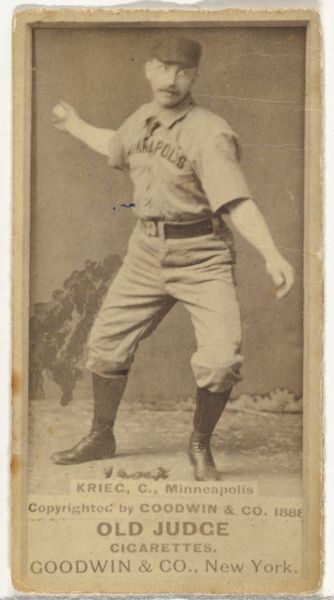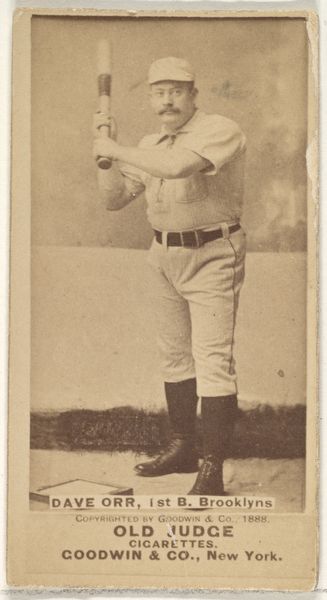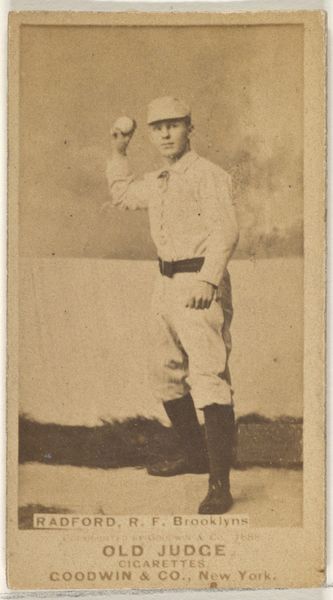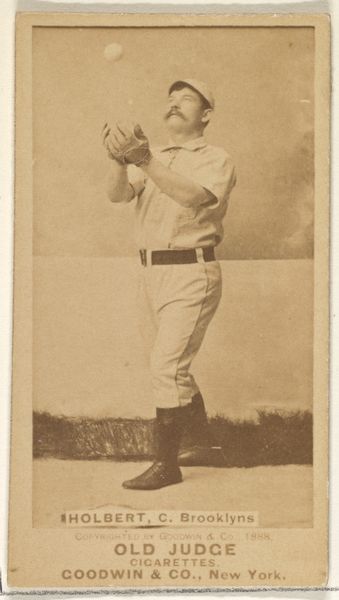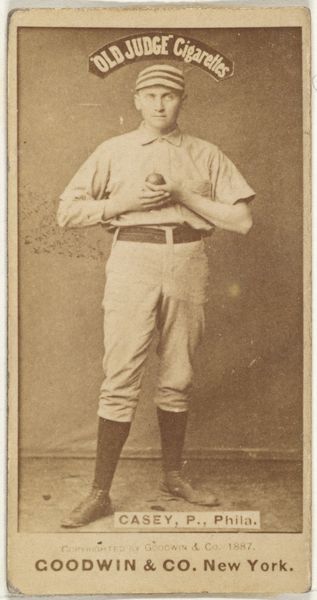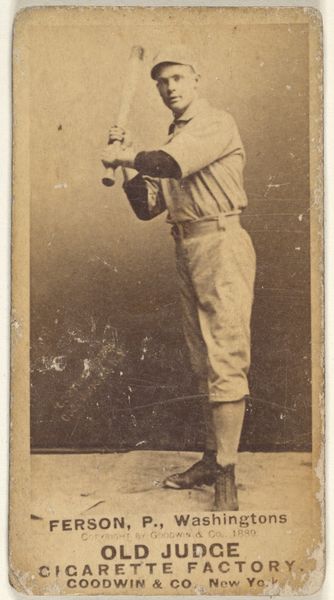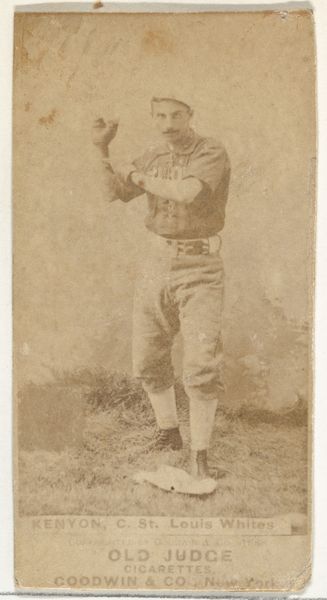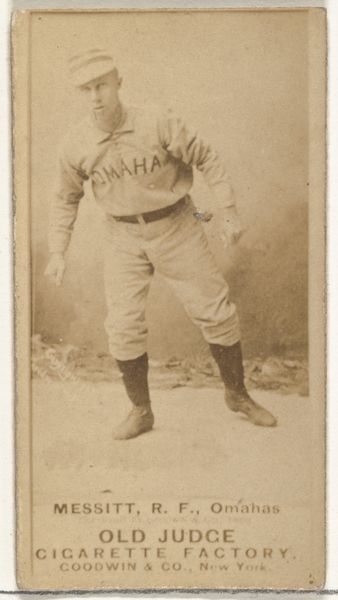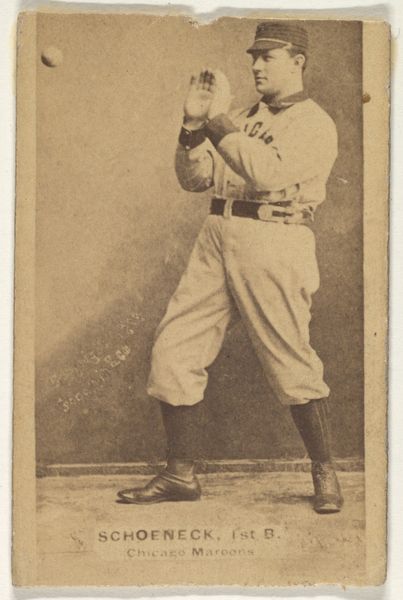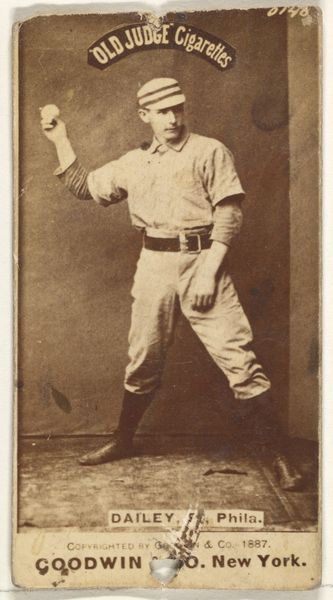
Michael "Mickey" Francis Welch, Pitcher, New York, from the Old Judge series (N172) for Old Judge Cigarettes 1888
0:00
0:00
drawing, print, photography, gelatin-silver-print
#
portrait
#
drawing
#
still-life-photography
# print
#
impressionism
#
baseball
#
photography
#
historical photography
#
photojournalism
#
gelatin-silver-print
#
19th century
#
men
#
athlete
Dimensions: sheet: 2 11/16 x 1 3/8 in. (6.9 x 3.5 cm)
Copyright: Public Domain
Curator: Looking at this gelatin silver print from 1888, titled "Michael 'Mickey' Francis Welch, Pitcher, New York," I find myself immediately struck by its simplicity. The limited tonal range gives it an air of timelessness. Editor: Indeed. Before us, we see an image originally produced by Goodwin & Company. Welch, posed mid-pitch, is not merely an athlete but a symbol, intentionally or not, of late 19th-century industrial capitalism, mediated through consumer goods—in this case, Old Judge Cigarettes. Curator: Note the composition, though. His gaze, directed off-frame, creates a sense of anticipation. His posture, strong and balanced, speaks to the precision and control valued in athleticism, also emphasized through sharp geometric angles. It almost freezes action, wouldn't you agree? Editor: Precisely! And to consider that this image would have circulated widely speaks volumes about the cultural capital now attributed to athletes and, specifically here, about the normalization of tobacco consumption within popular culture and its promotion. This circulation further emphasizes the construction of American identity along the lines of sport and virility. Welch becomes a commodity, inseparable from the product he advertises and the emergent media landscape that enabled its reach. Curator: But there’s something more subtle at play. Observe how the sepia tone lends the image an aura of nostalgia even upon its initial creation, softening the edges of what was, at the time, modernity’s sharp focus on progress. Editor: Yes, that’s an astute observation. The warmth in tonality invites a kind of viewer sentimentality or attachment to notions of both American masculinity and the so-called ‘golden age’ of baseball, although racial politics dictated who got to participate and when. What kind of narratives about celebrity are born of that paradox, and, frankly, continue to thrive within and well-beyond the sport itself? Curator: I appreciate how a close inspection reveals unexpected layers. Initially, it seems simple but contains interesting perspectives about consumerism at the time. Editor: Absolutely. It is important to look at art through these layers of understanding.
Comments
No comments
Be the first to comment and join the conversation on the ultimate creative platform.
